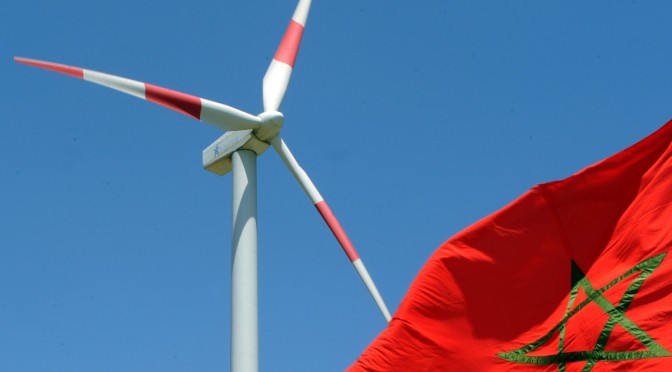A report released by the Global Wind Energy Council (GWEC) has highlighted Morocco’s shift towards prioritizing renewable energy, projecting that the country plans to have 5 GW of installed renewable wind energy installed by 2030.
Despite the country’s “aggressive renewable energy targets,” the report argued, Morocco still largely relies on the international energy market, importing 90% of its energy needs.
Rising gas costs make it even more important for Morocco to become more self-sufficient in the energy market.
GWEC noted Morocco’s growth potential in the wind industry, citing the country’s “excellent wind resources” With Morocco being home to the third-largest onshore wind fleet in Africa, GWEC projects that the country will install around 200-510 MW of wind energy per year until 2027.
One of Morocco’s targets is to have 80% of its energy supplied by renewable sources by 2050, with other milestones including adding 10 GW of renewable energy by 2030, including 4.2 GW of wind energy.
As Morocco has hit its 2020 targets of reaching 42% renewable and an overall 10% growth in renewables, the 2030 targets “seem reasonable,” GWEC’s report explains.
Although there has been steady growth in Morocco’s renewables sector, the country’s dependence on fossil fuel-based sources “threatens to undo any growth,” GWEC warned. Morocco has failed to reach its wind energy goals; originally the North African country had an objective of reaching 2 GW of wind energy by 2020.
Morocco’s expansion in the renewable wind energy industry could be accelerated if the country can move past the policy framework and infrastructure barriers, according to GWEC’s report.
GWEC claims that if Morocco moved past such obstacles it could install 43% more onshore wind energy over a five-year span.
Other problems facing wind energy growth include wind turbine suppliers’ struggle to meet requirements that adhere to the latest grid codes of technical requirements. Increasing costs of grid usage have also impacted the retail price of electricity for independent power producers.
Legislative challenges also affect the industry’s growth, as solar energy law prohibits the projects to share grid connection points with wind energy plants, the report documented, adding that Morocco currently does not allow the combination of wind and solar projects.
What can wind farms offer Morocco
The report explained that if by 2027 6,500 GWh of electricity was produced by wind energy in Morocco it would equate to the power needed for 6.6 million homes. This quantity of energy would also save 110 tonnes of carbon emissions, which is equivalent to planting and maintaining 2.9 million trees over a period of 10 years, and enough to fuel 95 million return flights from Rabat to Sharm el-Sheikh.
The list of such options is extensive given the sheer power that wind energy has to offer.
Wind farms are not only an opportunity for renewable energy but also a way to boost employment. According to GWEC’s report, if Morocco hits its accelerated wind energy targets by 2027, there would be a capacity for 174,000 jobs. In addition to employment, growth wind farms could add $3.4 billion gross value to the national economy, if Morocco hits the accelerated 2027 target.
Accelerating wind power
GWEC proposes that grid costs should be reduced, saying that this in turn will give rise to returns on investment. Allowing wind and solar plants to share grid connection points could also help boost the wind industry while removing “the competitive aspect” between the two branches of renewables, GWEC said.
Allowing a hybrid grid connection would also encourage investors, GWEC suggested, arguing it could “improve confidence,” as projects would be connected to a grid promptly.
Among its suggestions, GWEC stated that Morocco’s existing green hydrogen targets should serve as an incentive for wind energy production.
This report comes as many international actors continue to hail Morocco’s promising, and so far successful, efforts to shift to clean energy.
Morocco’s green energy shift
Morocco has shown sizable efforts over the last few years to utilize green energy. One of the most notable projects is the Noor power plant which opened in 2009 in Ouarzazate. The giant solar farm has helped Morocco in its transition and aided the country to reach its 2020 solar energy targets of securing a minimum of 2,000 MW of solar energy.
Among Morocco’s laudable green energy efforts, GWEC’s report specifically highlighted the 2020 Midelt onshore wind plant in Draa-Tafilalet. The plant started out with 50 wind turbines and was one of the first in Morocco. The locals not only benefited from the renewable energy source but also the 250 jobs created to help run the wind farm have had a direct positive impact on their lives.
moroccoworldnews.com


